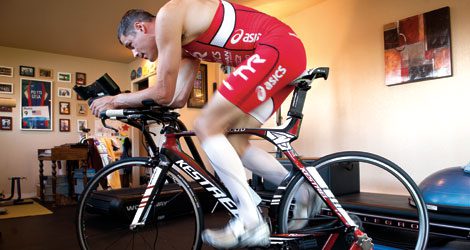Three Indoor Trainer Power Workouts


By LifeSport coach Jessica Adam
Power meters are a serious investment on top of all the other gadgets and devices you want and need for triathlon training. However, paired with your heart rate data they provide some of the most accurate and useful information available for you to when you download data after your ride. A power meter can measure the output of your muscles at work and provide instant feedback and guidance for effort. A power meter can also help you monitor your recovery rides, a truly useful tool for making sure you are staying within recovery zones during those sessions. While heart rate measurement provides beneficial training data, the variance due to day to day changing conditions of weather, dehydration, fatigue, drift, and other factors can add a little bit of guesswork to determining power. Data from power output is the simplest and most effective way to build your bike strength and reduce your bike times. To learn riding with a focus on power, here are three power workouts you can do on your indoor trainer this winter.
During these sessions, get used to watching your power (Watts) and how it fluctuates for different levels of intensity. This is an excellent way to get used to your new tool. It’s ok if you don’t have a power meter to start doing these workouts, as you can base them on perceived exertion for now. For perceived exertion use Rate of Perceived Exertion (RPE) 0 to 5 from easy to hard as your gauge.
WORKOUT 1. Power for the pass
This workout will help you build strength to absorb the surge required to pass.
Warm Up: 15 minutes easy spin
5 x 1 minute (1 minute recovery spin). Build through the minute, making each 15 seconds a harder gear.
Main Set: 2 x 10 minutes (5 minutes recovery) Pedal as hard as you can for 15 seconds in a gear you can push 90 to 110 rpm with effort (RPE 4), then spin easy for 45 seconds. This gives you one 15 second surge each minute for 10 minutes. Challenge yourself to hold power or slightly increase during surges over the set. RPE
Cool Down: 15 minutes easy spin at 90 to 100 rpm
WORKOUT 2. Power for TT’s
This workout is great for any triathlete and teaches consistent power for time trial efforts.
Warm Up: 10 minute easy spin
4 x 30 seconds left leg only, 60 seconds both legs and increasing cadence by 15 seconds, 30 seconds right leg only, 60 seconds both legs and increasing cadence by 15 seconds.
Main Set: 5 x 2 minutes (2 minutes recovery) Ride fast and hard, (RPE 3 to 4/5) for 2 minutes. Watch your power and maintain consistent power for the set.
Cool Down: 15 minutes easy spinning at 90 to 100 rpm
WORKOUT 3. Power Bursts
This workout is designed to provide the power needed to surge or break away from a pack and will build general leg strength.
Warm Up: 15 minutes easy spinning then 4 to 5 x 30 seconds (1 minute) big gear pulls to prepare legs. Big gear: put bike in large ring and a big gear to decrease cadence to 60 to 70 rpm. Ride smooth powerful circles.
Main Set: 10 x 30 seconds (30 seconds). Start by spinning at a cadence around 65 to 70 rpm. Shift to your big gear and while seated, pedal as hard as you can until you reach 90 + rpm. (RPE 4 to 5/5)
Cool Down: 15 minutes easy spinning at 90 to 100 rpm
These workouts are designed to increase your power output on the bike but remember that training with a power meter is not just about pushing hard. Ride with finesse and pay attention to smooth cadence, technique and being relaxed. Be aware of power during your everyday training and you will learn to become a better cyclist. For example, use your power meter to ensure you are building endurance or recovering at the right intensity during those sessions. This information is just as important and useful as the maximum wattage you can generate on the bike. Over time, you should be able to build your watts by using specific workouts, but that won’t happen unless you see the appropriate recovery wattage as well.
LifeSport triathlon coach Jessica Adam has been a coach in Victoria, Vancouver and now resides in the Toronto area contact Jess@LifeSportCoaching.com
